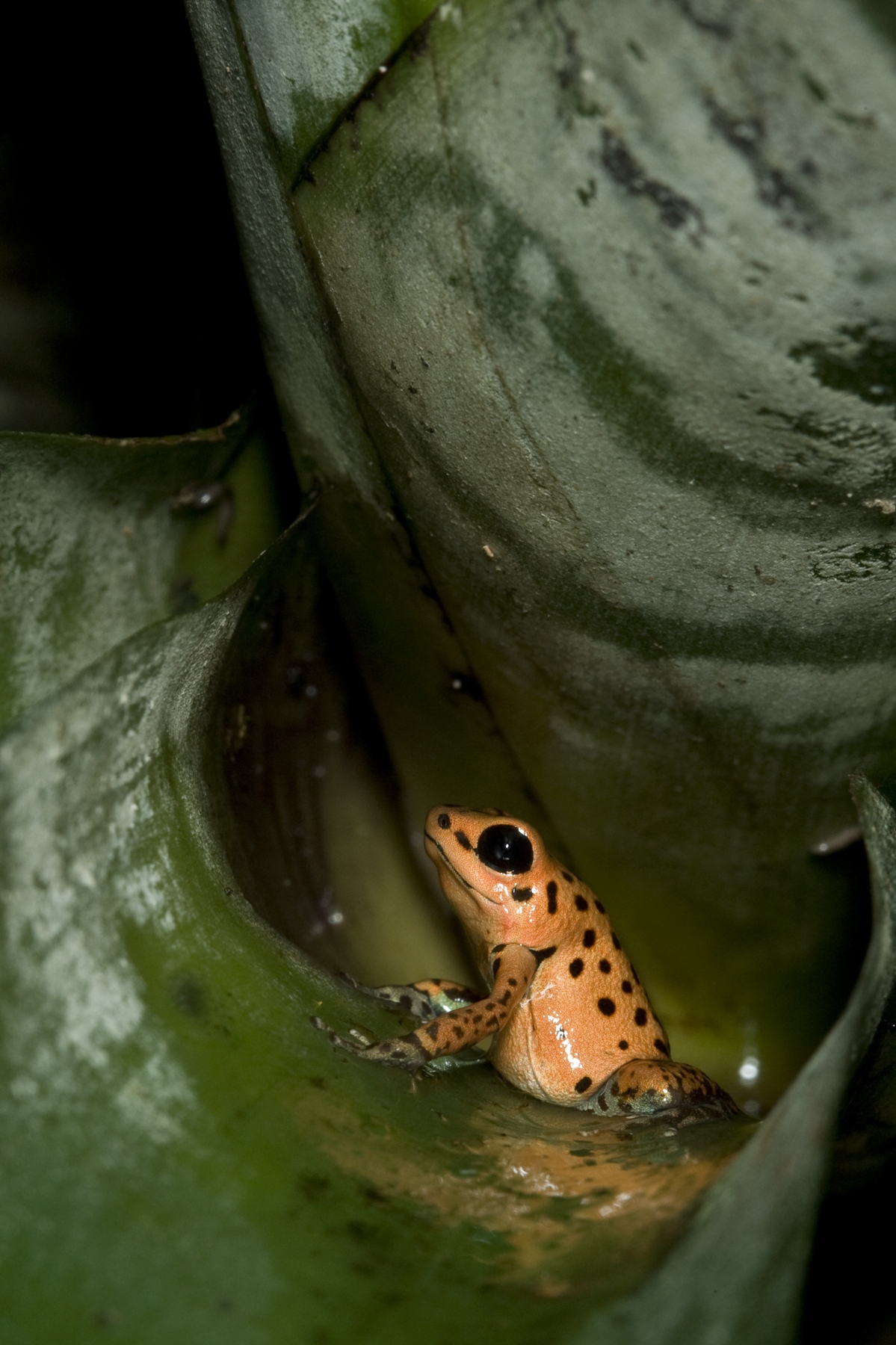Cute Frog of the Week: April 11, 2011
The strawberry poison dart frog, Oophaga pumilio, is an amazingly beautiful little creature that normally reaches only 17 to 24 mm in length. Even though these cuties are tiny, their poison is potent. Like other poison dart frogs, skin coloration is this frog’s protection mechanism, indicating its toxicity and telling predators to stay away. This species has at least 15 different morphs, or forms, and can range in color patterns from blue with no spots to olive green and yellow with black flecks. In one of its most common forms, also known as the “blue jeans form,” the head and body of the poison dart frog are bright red or orange, with blue or black lower parts, giving the illusion that this tiny cutie is wearing pants! Males also have a special tan-grayish vocal pouch under the throat, which they use to defend their territory in the humid lowlands and forests of Costa Rica, Nicaragua and Panama.
These guys are fiercely territorial, sometimes defending territory that is up to 3 meters apart from other males! If someone provokes them or enters their “hopping” grounds, they aren’t afraid to challenge their opponents to a wrestling match. Another interesting fact about these dart frogs is that when it comes to breeding, the females really wear the pants. The females take matters into their own hands and approach the males to initiate breeding. Once the female has laid her eggs, it’s up to the male to tend to the clutch and keep them moist by—are you ready for this?—emptying his bladder on them until they hatch. The females will then carry the tadpoles on her back to small pools in bromeliads and will feed the offspring by laying unfertilized eggs in with the tadpoles as their primary food source. Both parents invest some serious time and resources in raising their young. Sounds like they deserve the “Parents of the Year” Award, right? While these brightly colored beauties do face threats, such as habitat loss and over-collection for the pet trade, there is some good news: These cuties are listed as least concern by the International Union for Conservation of Nature because of their wide distribution, tolerance of a degree of habitat modification and presumed large population.
Hop on, little guys!
Photo credit: Mehgan Murphy, Smithsonian’s National Zoo
Every week the Panama Amphibian Rescue and Conservation Project posts a new photo of a cute frog from anywhere in the world with an interesting, fun and unique story to tell. Be sure to check back every Monday for the latest addition.
Send us your own cute frogs by uploading your photos here: http://www.flickr.com/groups/cutefrogoftheweek/

